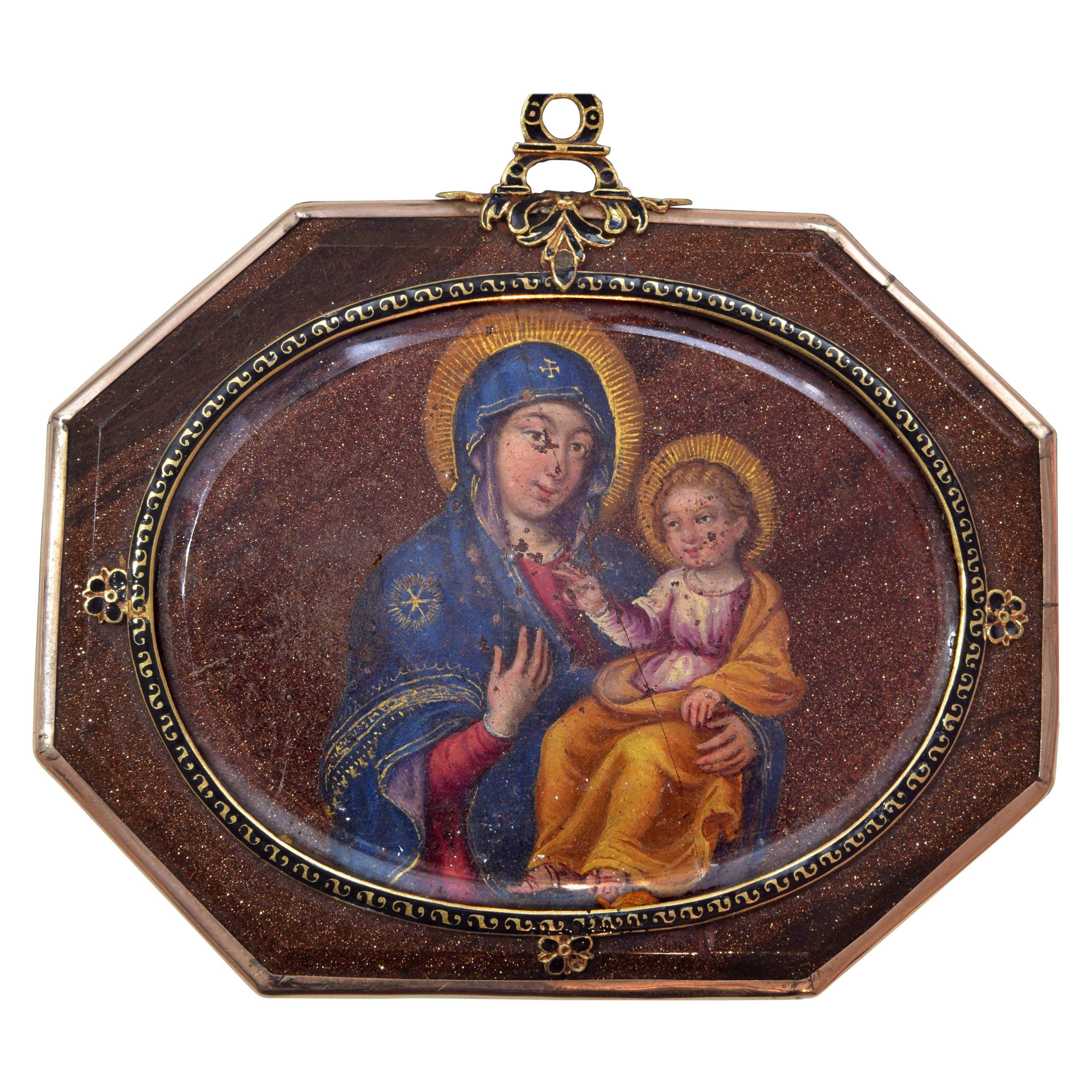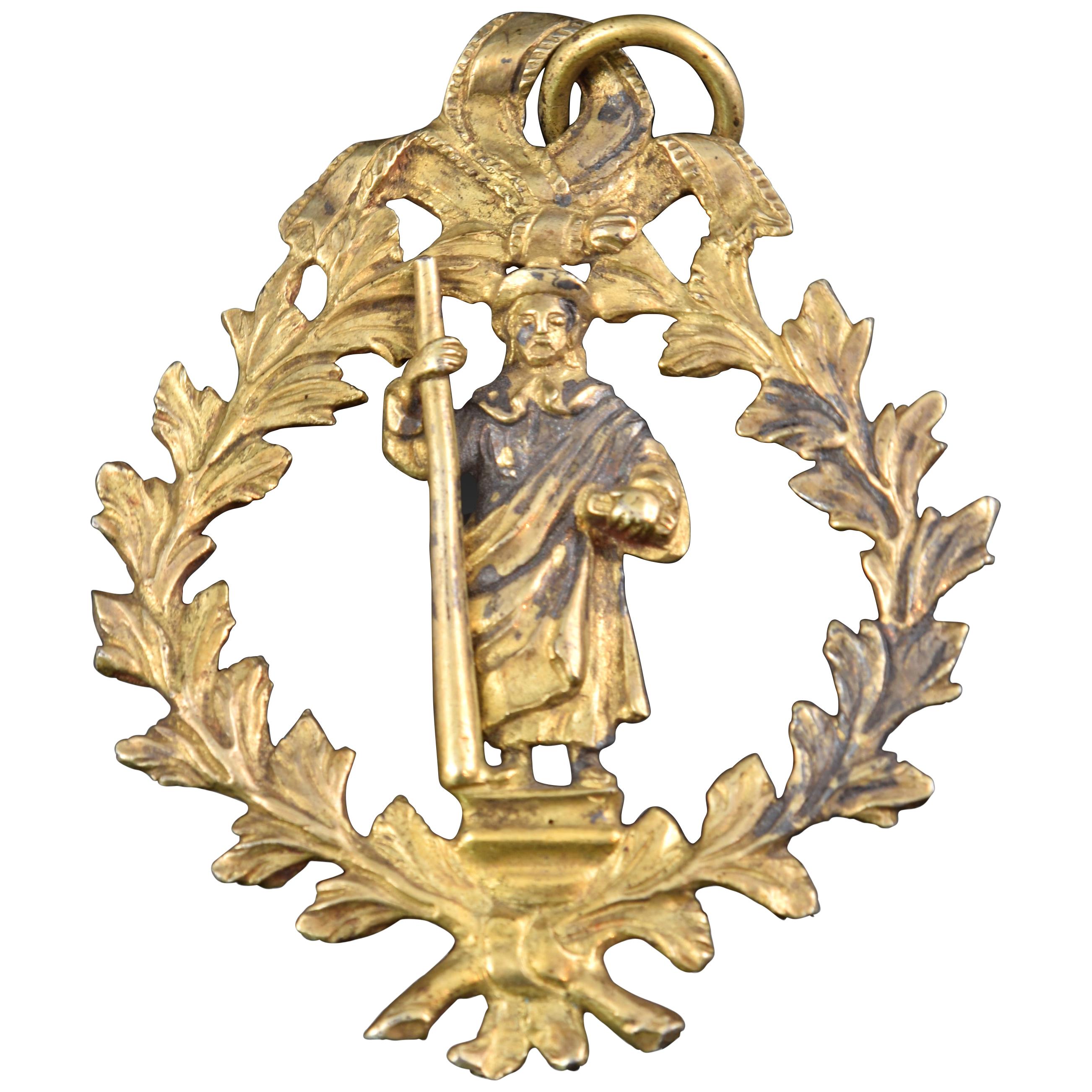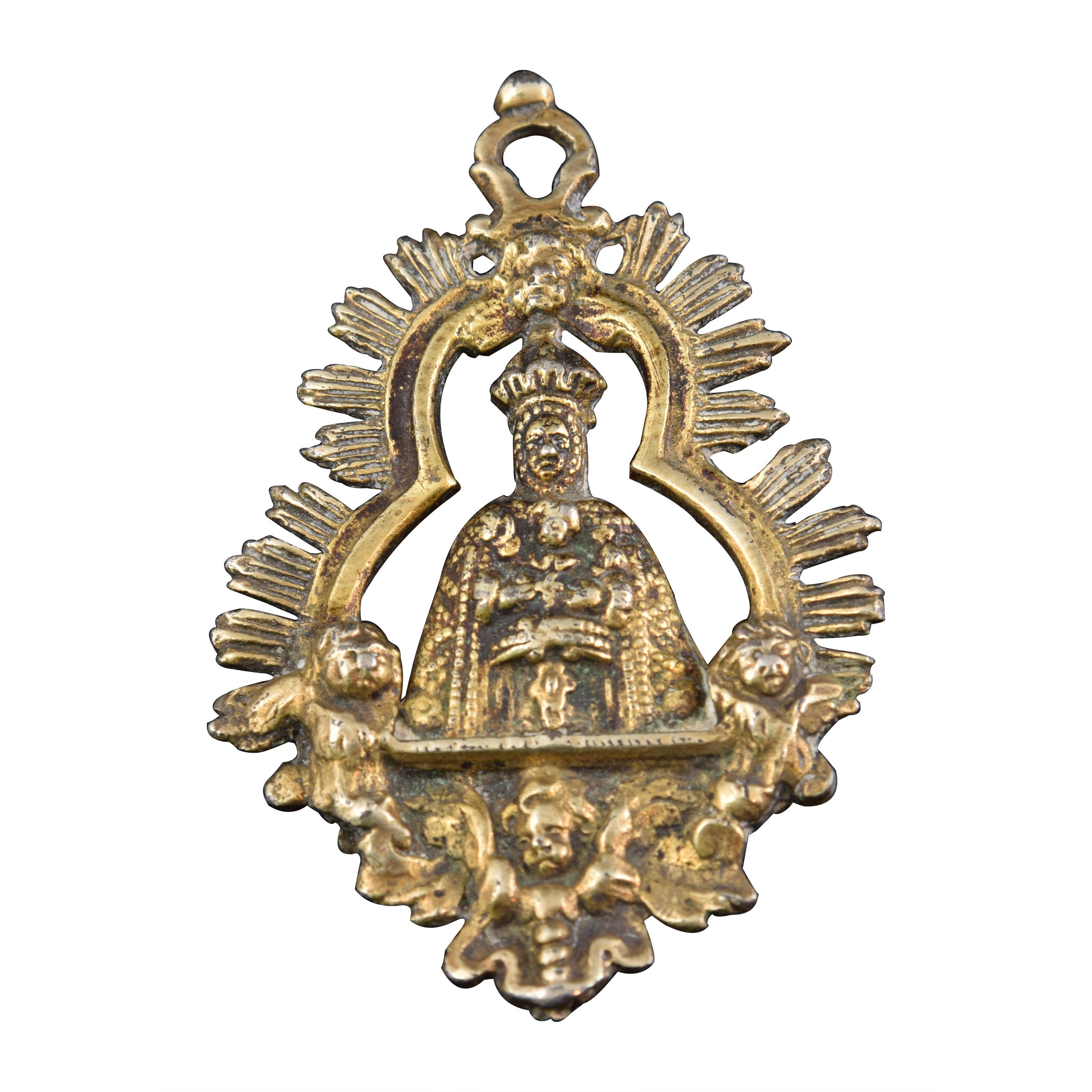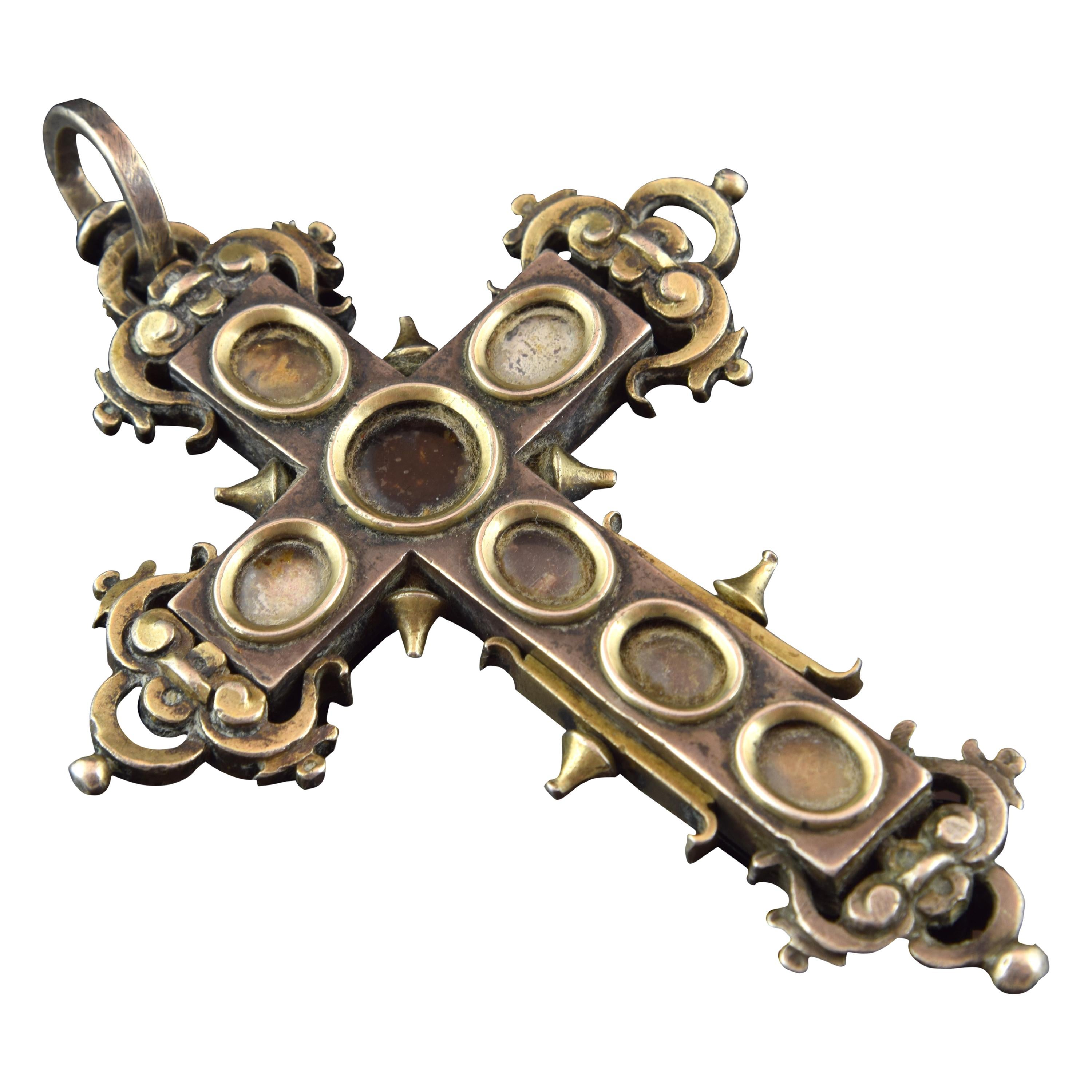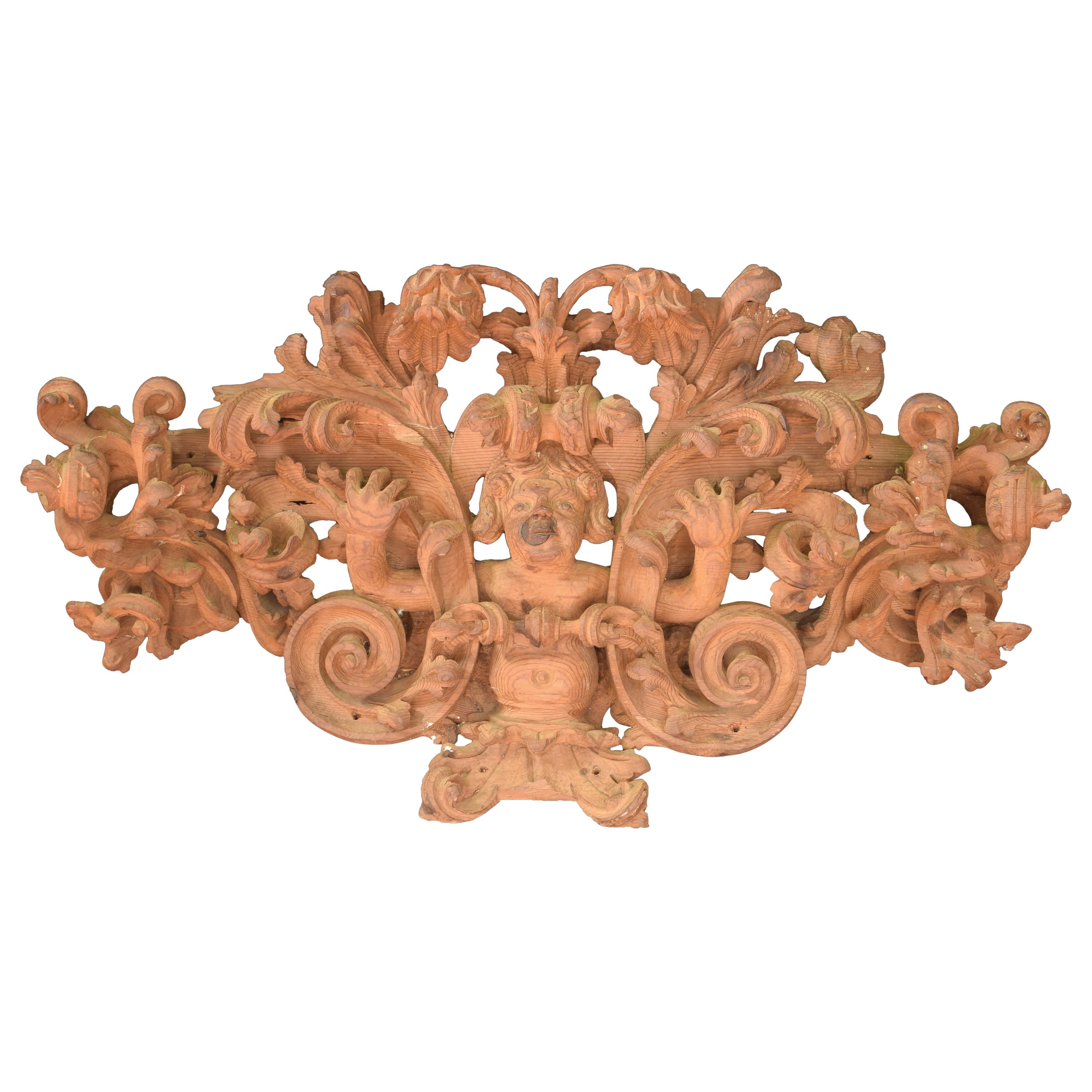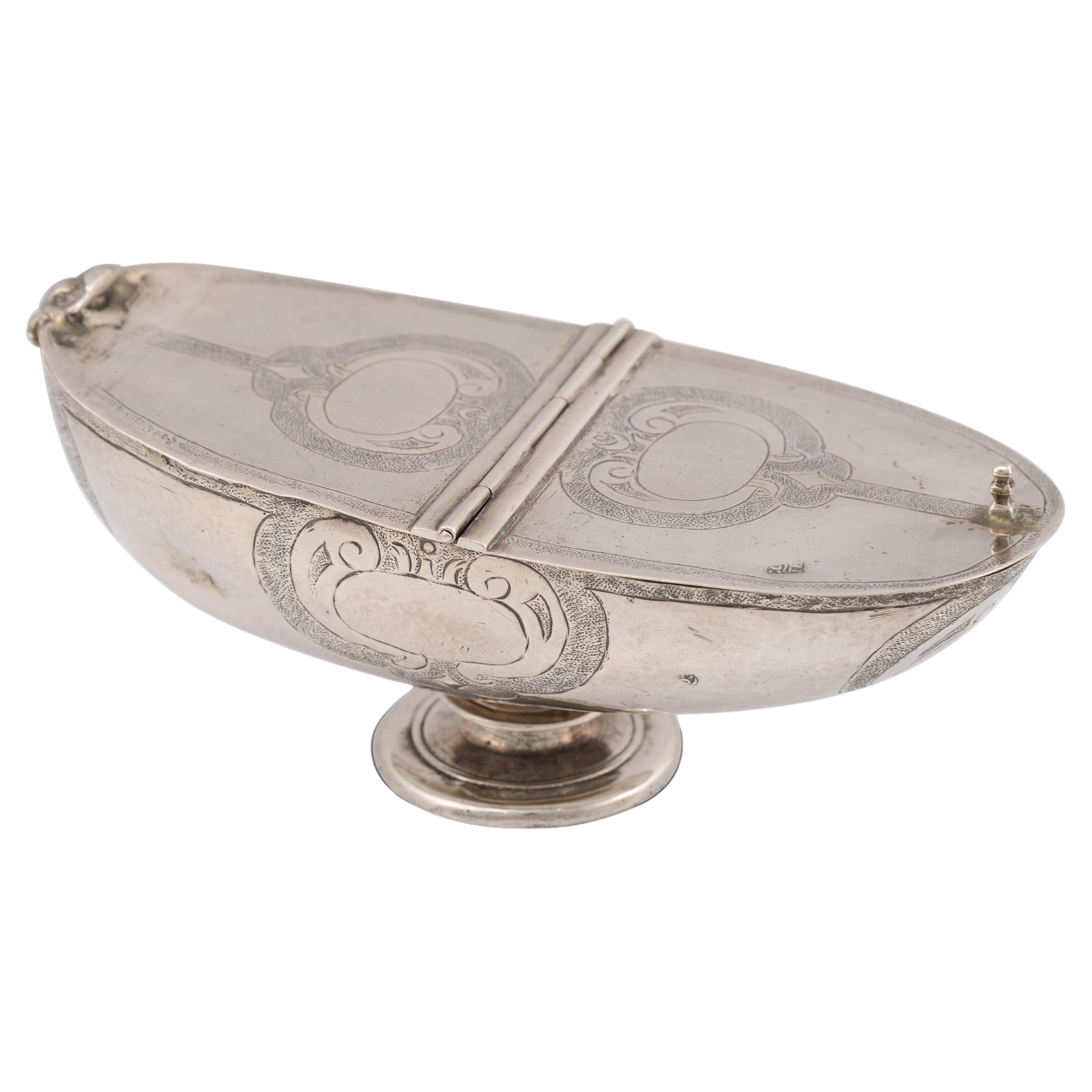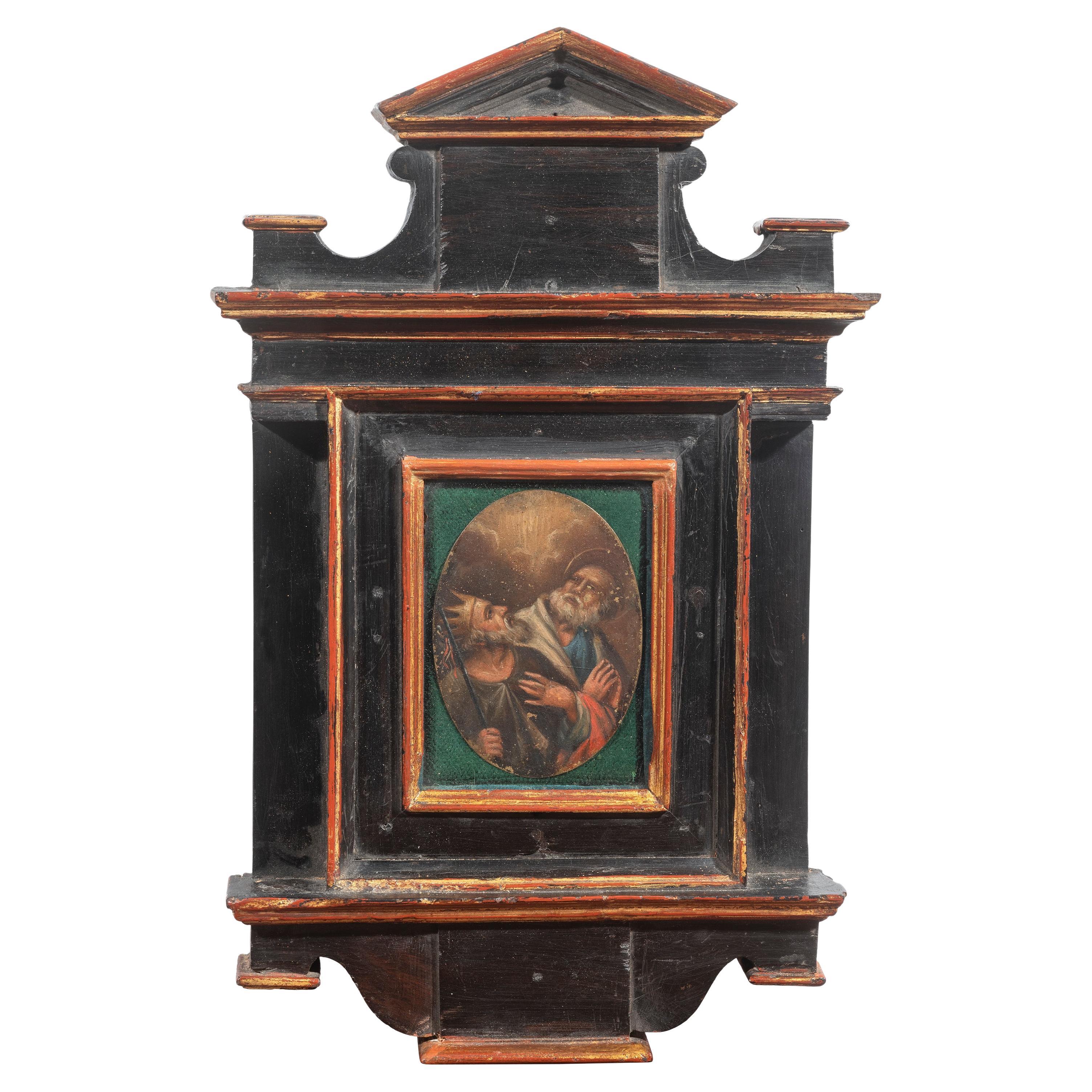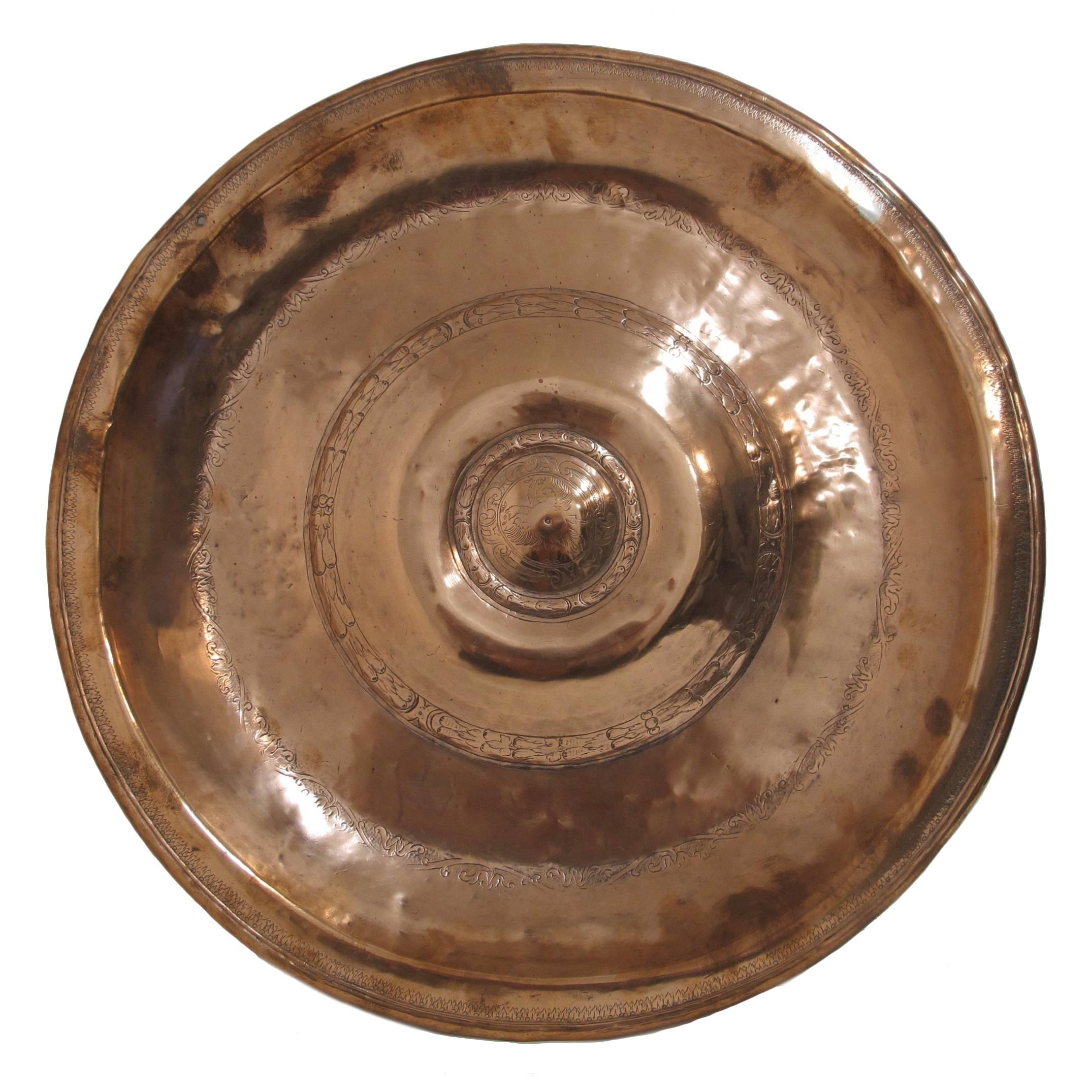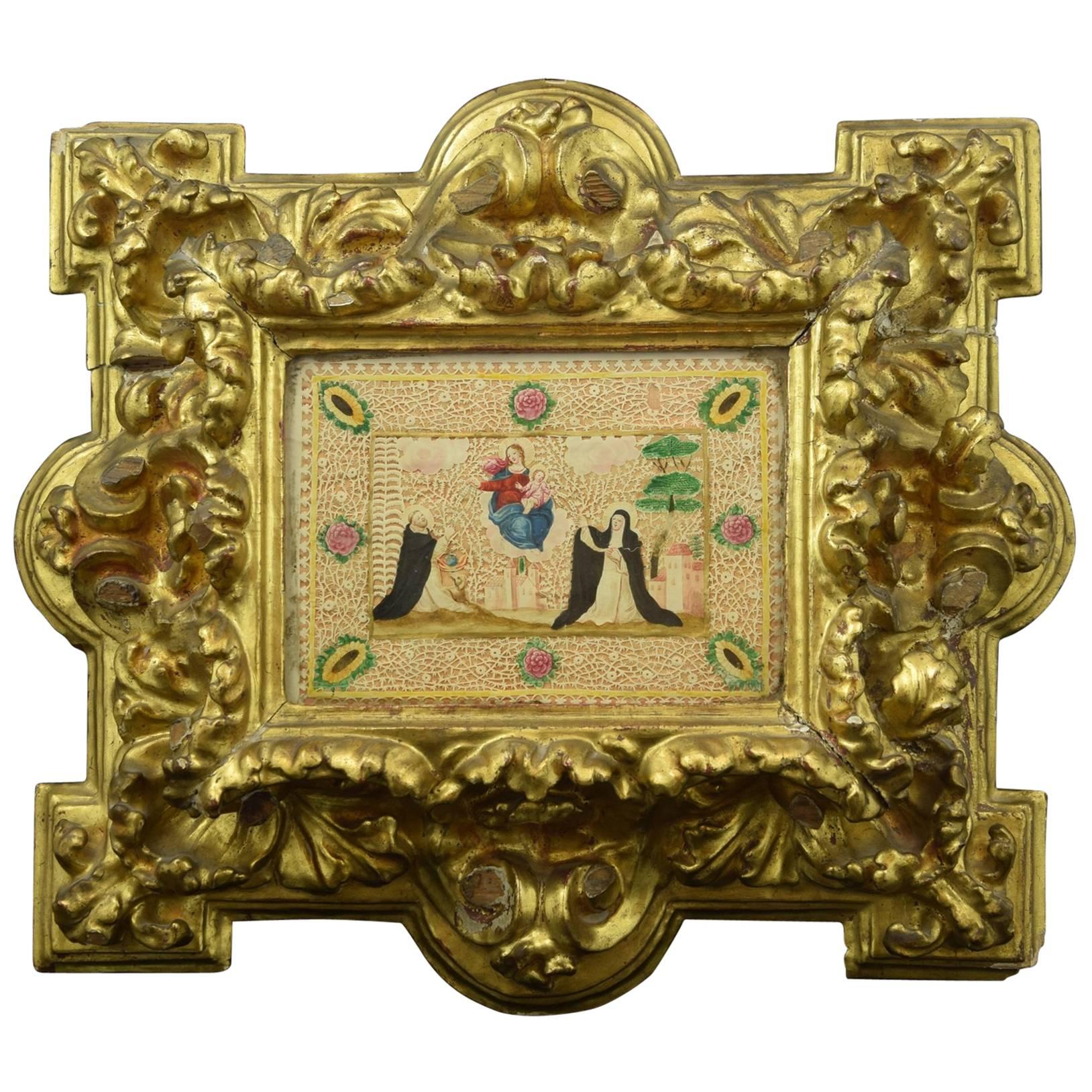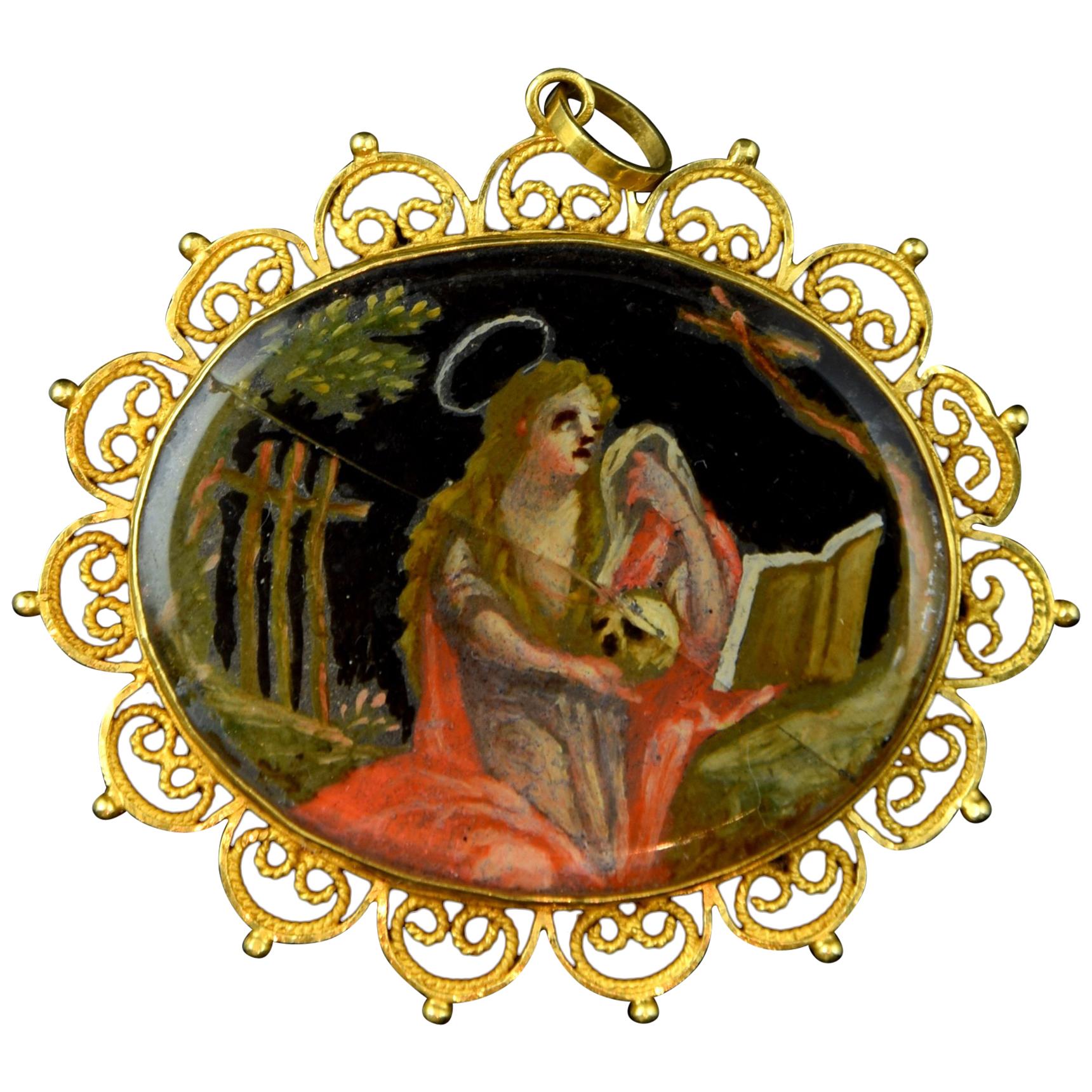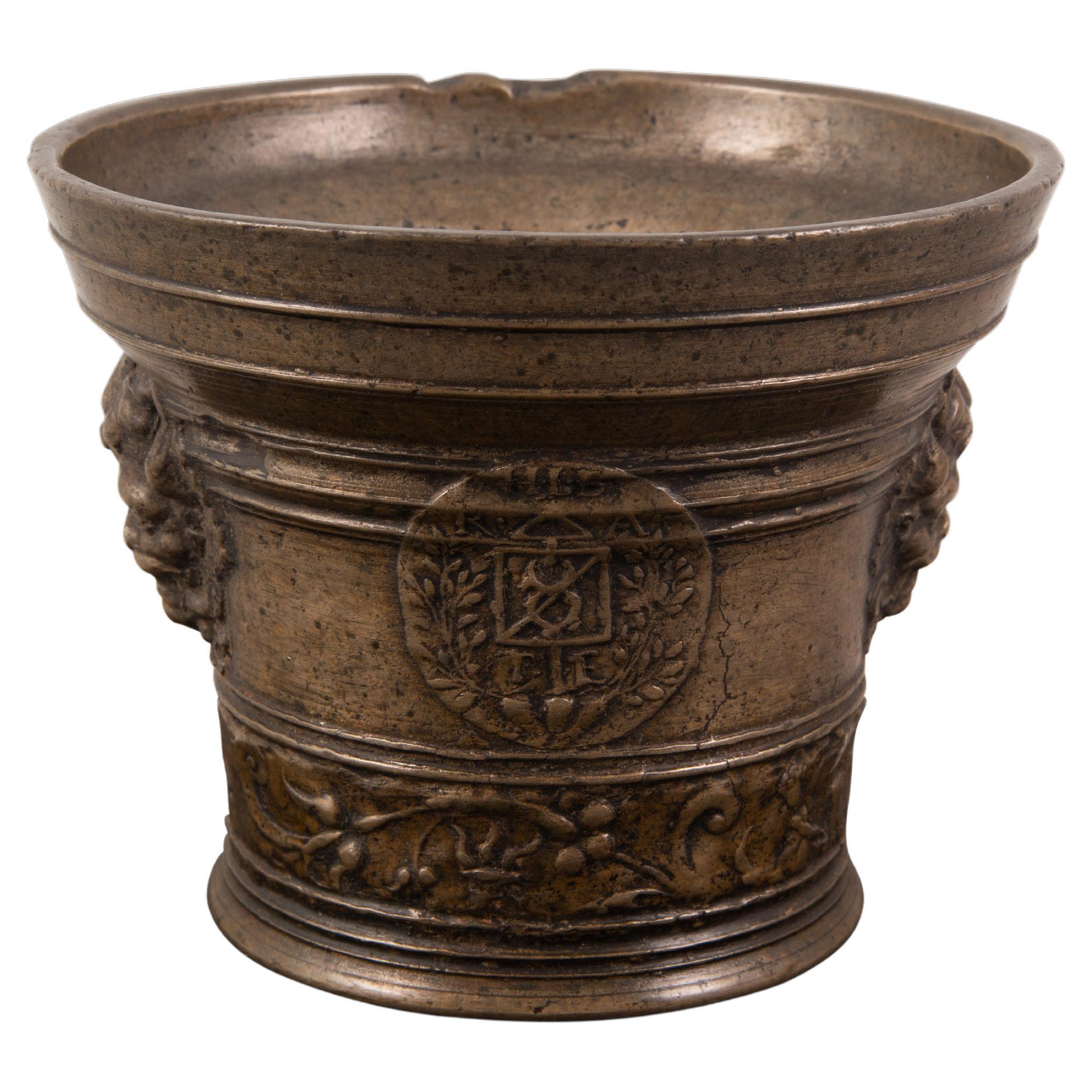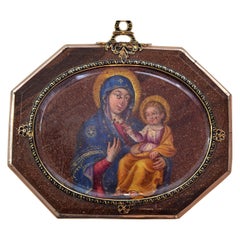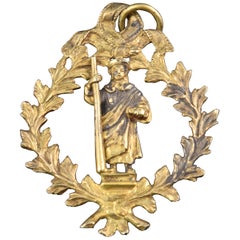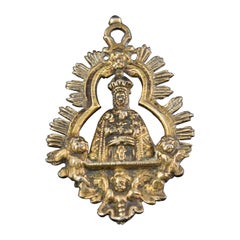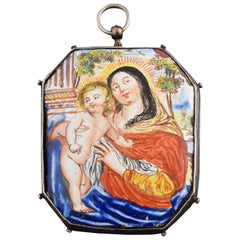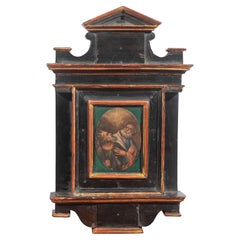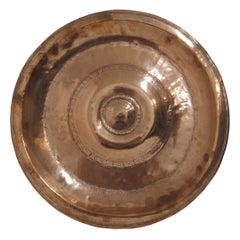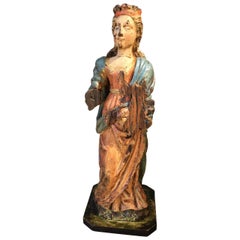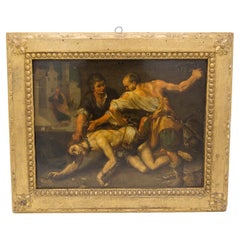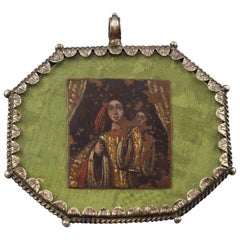
Devotional Pendant or Medal, Painting on Copper, Silver, Glass, 17th Century
View Similar Items
Want more images or videos?
Request additional images or videos from the seller
1 of 6
Devotional Pendant or Medal, Painting on Copper, Silver, Glass, 17th Century
About the Item
- Dimensions:Height: 3.35 in (8.5 cm)Width: 3.55 in (9 cm)Depth: 0.2 in (5 mm)
- Style:Baroque (Of the Period)
- Materials and Techniques:
- Place of Origin:
- Period:
- Date of Manufacture:17th Century
- Condition:Wear consistent with age and use. Minor fading.
- Seller Location:Madrid, ES
- Reference Number:Seller: ZF04591stDibs: LU2951315407822
About the Seller
4.9
Vetted Professional Seller
Every seller passes strict standards for authenticity and reliability
Established in 1985
1stDibs seller since 2017
342 sales on 1stDibs
Typical response time: 6 hours
Authenticity Guarantee
In the unlikely event there’s an issue with an item’s authenticity, contact us within 1 year for a full refund. DetailsMoney-Back Guarantee
If your item is not as described, is damaged in transit, or does not arrive, contact us within 7 days for a full refund. Details24-Hour Cancellation
You have a 24-hour grace period in which to reconsider your purchase, with no questions asked.Vetted Professional Sellers
Our world-class sellers must adhere to strict standards for service and quality, maintaining the integrity of our listings.Price-Match Guarantee
If you find that a seller listed the same item for a lower price elsewhere, we’ll match it.Trusted Global Delivery
Our best-in-class carrier network provides specialized shipping options worldwide, including custom delivery.More From This Seller
View AllDevotional Pendant, Oil on Aventurine, Gold, Enamel, Spain, 17th Century
Located in Madrid, ES
Devotional pendant or reliquary. Oil painting on aventurine, enamel, gold. Spain, 17th century.
Medallion or devotional pendant or reliquary made of aventurine or aventurine with an octagonal shape and faceted fronts, enhanced with a series of enamels combining black and gold, which protect two oil paintings with a Catholic Christian religious theme, located one on each side of the piece. Protected, you can see a very particular Virgin with Child for being inspired by the Icon of the Madonna del Popolo (Rome, Italy), and a simplified Martyrdom of San Lorenzo (the saint, the grill and an angel with a crown and the palm corresponding to the subject). The edges of the piece have been protected with simple metal elements.
The painting of San Lorenzo follows a common composition in the Spanish school, and would recall works such as the painting of the main altar of the Church of San Lorenzo de Huesca, for example, but also others such as the engraving by Marcantonio Raimondi (executed around 1527) in some details. The so-called icon of the Madonna del Popolo was well known for being considered as made by Saint Luke, and was brought to the church of the same denomination by Gregory IX from the Sancta Sanctorum of the Lateran Palace after a flood caused a terrible plague in the city and through a solemn procession with the image of Santa Maria del Popolo.
Regarding the material of the piece, a certain type of glass and a type of quartz (which can be green or reddish-brown, and usually has tiny elements of yellow mica that give it golden reflections) is known as aventurine or aventurine. In the first case, it is known that “aventurine” or “stellaria” appears mentioned in the Murano workshops for the first time during the first quarter of the 17th century, in reference to a very complicated production paste (it is said that the name comes from of this circumstance, that is, that its creation was due to luck or luck) that imitates the effects of that stone (from India and Russia at that time) thanks to the inclusion of copper particles, and that it was used as if out of stone (cut) given the complexity of its use in blowing (practically impossible). And, dealing with this material, it is necessary to mention “The Nativity” by Pietro da Cortona, dated around 1656, which is kept in the El Prado...
Category
Antique 17th Century Spanish Baroque Religious Items
Materials
Gold, Enamel, Other
Devotional Pendant, Saint James the Great, Bronze, Spain, 17th Century
Located in Madrid, ES
Devotional medal, Santiago Apóstol. Ormolu, 17th century.
Openwork devotional medal with the image of Santiago Apóstol in the center, on a pedestal and holding a staff and a book, surrounded by a crown of leaves knotted with two loops above and below. Copies similar to the present one are found in the Museum of Pilgrimages in Santiago de Compostela...
Category
Antique 17th Century Spanish Baroque Religious Items
Materials
Bronze
Virgin with Child, Devotional Medal or Pendant. Spain, 18th Century
Located in Madrid, ES
Medal. Spain, 18th century.
Devotional medal made of gilded metal that shows an image of the Virgin Mary, placed on a pedestal and surrounded by a r...
Category
Antique 18th Century Spanish Neoclassical Religious Items
Materials
Metal
Reliquary Pendant, Silver, Enamel, 17th Century
Located in Madrid, ES
One of its fronts presents a textile background under a transparent glass, space that was surely designed to contain relics. The other side has a brightly colored enamel with the Vir...
Category
Antique 17th Century European Baroque Religious Items
Materials
Silver, Enamel, Other
Reliquary Cross Pendant, Silver, Glass, 17th-18th Century
Located in Madrid, ES
Devotional pendant made in silver with a Latin cross shape, decorated on the outside with simple scrolls, spikes, pearls and other elements of classicist inspiration, as well as a ri...
Category
Antique 18th Century European Neoclassical Religious Items
Materials
Silver
Crown or Crest, Pinewood, 17th Century
Located in Madrid, ES
Top or top made of pine wood carved in color with a human bust in the center, located by grabbing two scrolls and thus creating an axis of symmetry for the...
Category
Antique 17th Century European Baroque Religious Items
Materials
Pine
You May Also Like
17th Century Oil on Copper Saint Joseph and King David
Located in Firenze, IT
SHIPPING POLICY:
No additional costs will be added to this order.
Shipping costs will be totally covered by the seller (customs duties included).
Miniature on copper...
Category
Antique Mid-17th Century Italian Baroque Paintings
Materials
Copper
17th Century Copper Alms Plate
Located in San Francisco, CA
A 17th century or earlier large copper alms dish or alms plate.
Category
Antique 17th Century European Religious Items
Materials
Copper
Early 17th Century Sculpture
Located in Copenhagen, K
Amazing Baroque sculpture of a woman wearing a crown in original paint. Her hands are missing. Colors are untouched, recently cleaned off from a thick dark coating, I have images fro...
Category
Antique Early 17th Century French Baroque Figurative Sculptures
Materials
Oak
Caravaggesque Oil on Copper "Flagellation of Christ" Baroque Sicilian, 17th Cent
By (After) Caravaggio
Located in Milano, IT
Splendid 17th-century Italian painting by unknown artist, but certainly a follower of Caravaggio, relying on style and drawing.
The painting has a very beautiful gilded wooden frame, with a subtle greek with spheres and an overlying rectangular frame with sinuous flowers on each corner, very elegant and beautiful.
The painting depicts one of the most depicted religious scenes ever, the scourging of Christ, and is entirely done in oil on copper.
The scourging of Jesus is an episode narrated in the Gospels (Mk15:15-16; Mt27:26-27; Lk23:16-26; Jn19:1-17[1]).
Scourging is a flogging, particularly bloody, by means of sticks, rods or cat-o-nine-tails, the latter instrument consisting, in the Roman typology, of a short stick to which were secured several strings ending in metal claws, leads and bone splinters that caused tremendous lacerations and fractures to the tortured person. Chains are used in this scene, both to immobilize Jesus Christ and to flog him, as we can see in the upper right hand of the scourger.
According to some personal research, it turned out that the actual scourging of Christ was mostly depicted at the column, while this Christ is on the ground, so presumably Christ here is scourged during the Way of the Cross at one of those stages where he fell.
The painting has a very dark coloring, which is why this painting is believed to faithfully follow Caravaggio's style of dry, authoritarian brushstrokes. The painting shows a figure agonizing on the ground that continues to receive beatings and floggings of all kinds, representing Christ; his face is crucified in a loquacious expression of pain, he turns his eyes to heaven as if to invoke God, but at the same time those same eyes admonish the wickedness and arrogance inherent in humanity.
Christ has one hand resting on the ground in the act of holding himself, while the other takes a completely unnatural stance against the barren ground. His body appears hardened to wanting to parry the blows, his legs are curled up on his knees as he takes kicks from the soldier above him. Christ is depicted pinned down from the neck with a very large and strong black iron bolt held by the other soldier. The soldier on the right in the foreground wears a one-shoulder tunic with an orange tunic and blue pants. On his feet he wears gray shoes, at his waist he has a belt with an iron helmet...
Category
Antique 17th Century Italian Baroque Paintings
Materials
Copper
$16,745 Sale Price
20% Off
Rare 17th Century Silver Reliquary Arm Monstrance
Located in Amsterdam, NL
A rare silver reliquary arm with relic bone, with the coat-of-arms of Cosme Roger (1671-1710), bishop of Lombez, France, with original bone relic
Poss...
Category
Antique Late 17th Century Italian Renaissance Religious Items
Materials
Sterling Silver
17th Century Christ in Chains Painting Oil on Canvas
Located in Milan, IT
17th century
Christ in chains
Oil on canvas, 95 x 71 cm
Frame 110 x 84 cm
The figurative tradition representing Christ with chained hands can be traced back to the early Middle Ages, when an iconography of His pains spread widely. The need to translate the Passion into images aimed to raise awareness of the forgiveness that has occurred for all men, consequent to the Crucifixion.
This painting depicts the moment before the audience before Pilate. Christ has not yet been cruelly mocked by the soldiers, despite the fact that he is already wearing the crown of thorns and the purple...
Category
Antique 17th Century Italian Paintings
Materials
Canvas
Recently Viewed
View AllMore Ways To Browse
Antique Virgin Mary Pendant
Esther Scroll
Jerusalem Mother Of Pearl
Lion Skull
Montserrat Virgin
Silver Holy Water Font
Silver Monstrance
Virgin Mary Santos
Antique Grave Marker
Antique Santos Crown
Bezalel Mezuzah
Gothic Holy Water
Ivory Crucifix
Wood Monstrance
Antique Rosary Beads
Arma Christi
Baby Jesus Santo
Brass Bible Stand
